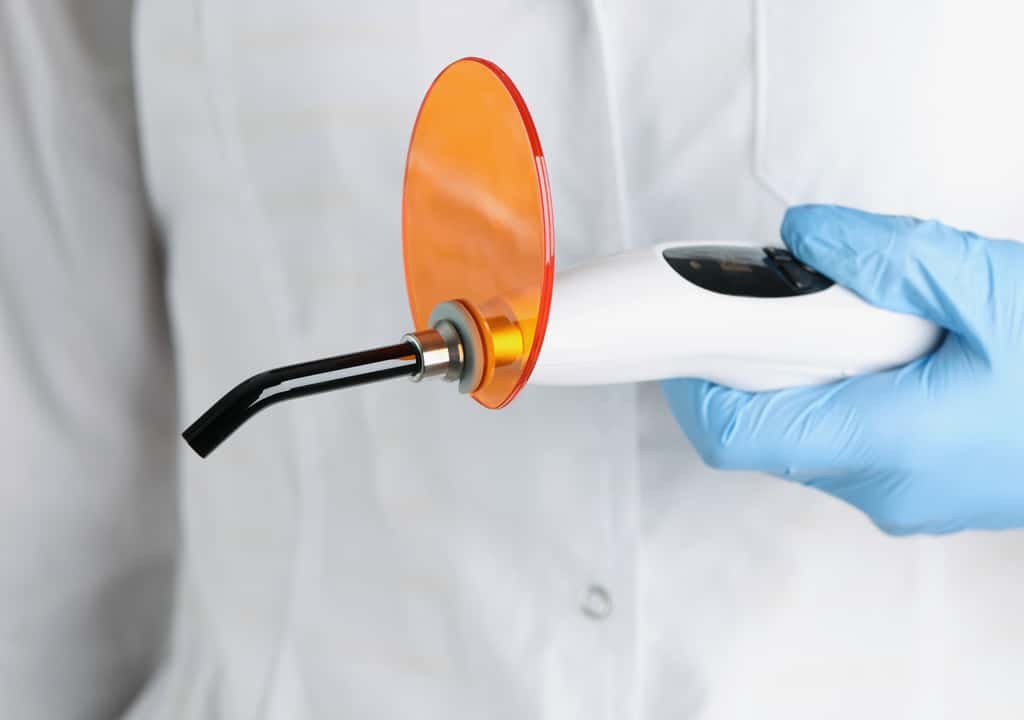Blog
Types of Dental Fillings: Materials & Benefits
Introduction:
We have compiled this article on “Common Dental Filling Materials”. The reference links are at the bottom of the article.
[1]To treat a cavity your dentist will remove the decayed portion of the tooth and then “fill” the area on the tooth where the decayed material was removed.
Fillings are also used to repair cracked or broken teeth and teeth that have been worn down from misuse (such as from nail-biting or tooth grinding).
What Steps Are Involved In Filling A Tooth?
First, the dentist will use a local anesthetic to numb the area around the tooth to be filled. Next, a drill, air abrasion instrument, or laser will be used to remove the decayed area. The choice of instrument depends on the individual dentist’s comfort level, training, and investment in the particular piece of equipment as well as location and extent of the decay.
Next, your dentist will probe or test the area to determine if all the decay has been removed. Once the decay has been removed, the dentist will prepare the space for the filling by cleaning the cavity of bacteria and debris. If the decay is near the root, your dentist may first put in a liner made of glass ionomer, composite resin, or other material to protect the nerve. Generally, after the filling is in, your dentist will finish and polish it.
What Types Of Filling Materials Are Available?
Today, several dental filling materials are available. Teeth can be filled with gold; porcelain; silver amalgam (which consists of mercury mixed with silver, tin, zinc, and copper); or tooth-colored, plastic, and materials called composite resin fillings. There is also a material that contains glass particles and is known as glass ionomer. This material is used in ways similar to the use of composite resin fillings.
Choosing The Right Type Of Dental Filling
Despite advances in dental hygiene and dental care, tooth decay remains a problem for many American children and adults. If not treated properly and in a timely manner, tooth decay can lead to more serious dental health problems including abscessed and failing teeth. This is why it is important to visit your dentist on a regular basis (every six months for most children and adults) so he or she can check for signs of tooth decay and other dental health problems.
There are a variety of different types of materials that can be used to fill cavities in the teeth including the following:
- Gold
- Silver Amalgam
- Composite
- Ceramic
- Glass Ionomers
Although each of these types of materials can be used to fill cavities in the teeth, some types of fillings are better suited for certain conditions. Your dentist is the best person to help you determine the material that is most suited for your needs, taking into consideration your budget and your current dental health.
When trying to decide which type of filling is best suited for you, you need to factor in the location of the cavity in your mouth, severity of decay, cost, and your insurance coverage. Read on to get more information about each of these materials.
Gold fillings are very strong, non-corrosive and can last up to 15 years, with proper care. However, they are much more expensive than silver amalgam fillings and require more than one dental visit to be fitted correctly.
Silver amalgam fillings are also very strong and sturdy, however, many individuals do not find them to be aesthetically pleasing. In addition, they are more likely to expand and contract and to cause a tooth crack as compared to other types of fillings. In addition, many individuals worry about the long-term safety of silver amalgam fillings since they contain Mercury: a known neurotoxin.
Composite fillings are an attractive option because they can be closely matched to the color of your teeth. However, composite fillings are more expensive than silver amalgam fillings and are not as durable.
Ceramic fillings are made of porcelain and are a very aesthetically pleasing option that is also very durable. However, ceramic fillings cost more than silver amalgam fillings and can wear the opposing teeth if the porcelain becomes rough.
Glass ionomers (acrylic fillings) often last for less than five years but are a good choice for children if their teeth are changing. They can also release Fluoride and this helps to prevent tooth decay.
Again, your dentist is the best person to help you decide which type of material to use for your dental fillings. If you have additional questions about any of these types of fillings, talk to your dentist today.
Conclusion:
Thank you for reading this article, and check back frequently for other dental health articles. Should you have any questions, please contact Apple Tree Dental today!
Article compiled by Apple Tree Dental
Article reference links

